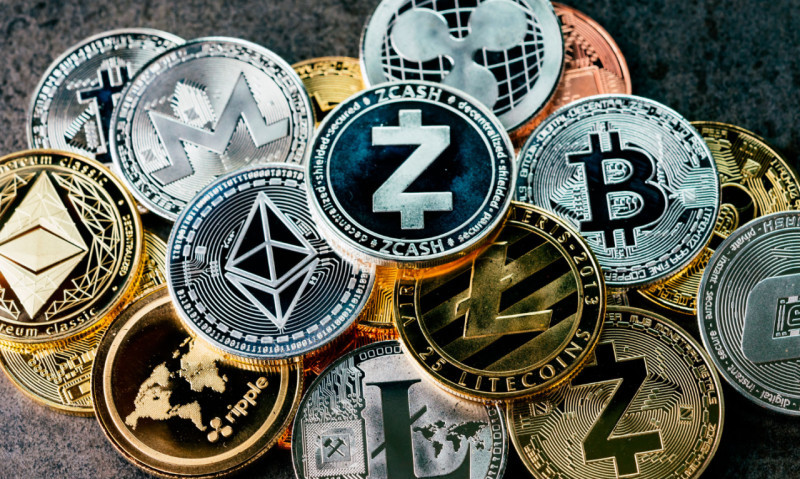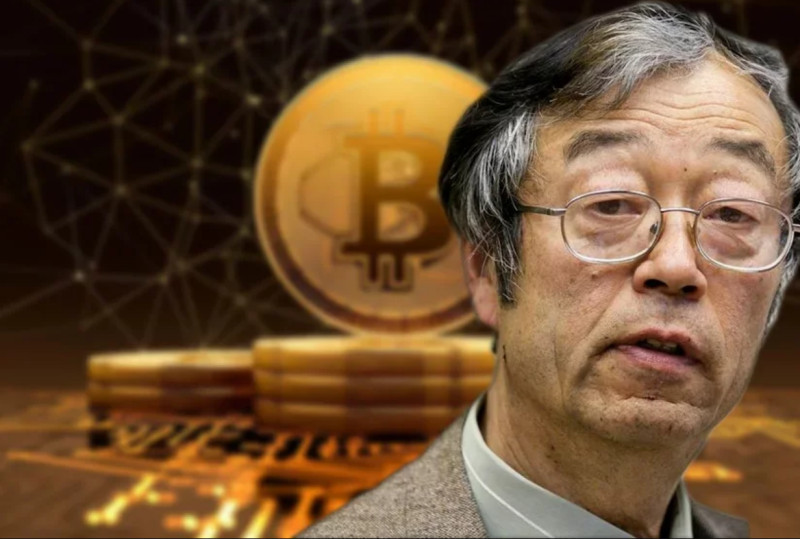
Cryptocurrency for beginners is a digital currency that uses encryption for transactions. It differs from other currencies because it lacks a central authority to issue and control it. The issuance of new cryptocurrencies and all transactions with them go through a decentralized system.
The idea of such a currency is not something new. In fact, there were many attempts to create it before the advent of cryptocurrencies.
A decade before the first cryptocurrency appeared, programmer Wei Dai proposed the idea in an article in 1998, discussing a monetary unit called "B-money." Dai proposed the concept of a digital currency that could be sent in an open system of so-called digital pseudonyms that could not be traced.
Around the same time, another programmer, Nick Szabo, attempted to create something similar to modern cryptocurrency, calling his invention Bit Gold. He also advocated for the creation and integration of a decentralized currency that would exist solely in digital space. Szabo believed that the traditional financial system was highly inefficient and required the launch of a fundamentally new form of currency.
Both of these projects were not realized, and no official launch of such revolutionary projects occurred. However, it can be said that these bold ideas somewhat influenced the creation of the first and most important when did cryptocurrency start – Bitcoin.
Before moving on to the creation of this "digital gold," let's delve deeper into the concept of cryptocurrency: what it is and how it actually works.
Cryptocurrency is a payment system that exists exclusively in the digital ecosystem. It is completely autonomous and independent of banks, meaning they do not participate in transactions with it. The system of such currencies allows absolutely anyone to send and receive payments with digital currency. Crypto payments can only be implemented in digital form in a special database that stores and describes transactions. These transactions cannot be used with physical money, i.e., those that move among people in the real world. When a money transfer is made in cryptocurrency, all operations with it are recorded in a special public ledger. Cryptocurrency is stored in digital wallets. To store and transfer data about virtual currency between digital wallets, special advanced encoding is used. This encryption is necessary to ensure the reliability and security of such transactions.
How cryptocurrency was created

Cryptocurrency processing occurs in the blockchain, a distributed public ledger that contains records of all transactions with digital money. Digital coins are created through a process known as mining, where computers use their computational power to solve very complex mathematical problems. Solving these problems is what creates digital money.
However, cryptocurrencies can also be acquired without mining. For instance, you can simply buy them from crypto brokers and then store (or spend) them in cryptographic wallets. Importantly, cryptocurrency does not have a physical form. It's not an object you can touch and hand over to someone else.
When did cryptocurrency start? It is a key that transfers records directly from one person to another. The key concept here is "directly." Unlike traditional currency transactions that always involve a third party (i.e., a bank), in the case of crypto coins, this trusted third party is absent.
Origin of cryptocurrencies
Let's start from the beginning. The idea of creating such a form of money first emerged in 1983. David Chaum and Stefan Brands were the first to propose the idea of electronic money and briefly outlined the concept of its operation. Naturally, this idea seemed bizarre and not welcomed at the time. Perhaps this is why it didn't progress beyond words. Enthusiasm met indifference and, as often happens, faded away.
The topic was revisited only in 1997 by Adam Back, who invented the Hashcash system. He believed that this system would prevent mass spam distribution and reduce DoS attacks. This system eventually laid the groundwork for creating blocks in the blockchain network, which became the foundation of all cryptocurrencies.
Hal Finney, who initiated the chain for hash blocks of the Hashcash system, also deserves attention. Additionally, the DigiCash system, which began working with cryptography in 1990, played a significant role. This was necessary to ensure that all operations were confidential. Unlike the cryptocurrencies we are familiar with today, DigiCash had one major difference: it was centralized. Notably, in 1998, DigiCash went bankrupt and ceased to exist.
When did cryptocurrency start appearing, internet users began to form communities. Within such communities, exchanges of such money took place.
How Bitcoin was designed

Bitcoin is considered the world's first cryptocurrency, designed by someone named Satoshi Nakamoto. It is believed that Nakamoto began working on Bitcoin as early as 2007 when he published a paper detailing the workings of a new type of money – cryptocurrency.
The first version of Bitcoin, Bitcoin 0.1, was released on January 9, 2009. At its inception, cryptocurrency functioned exclusively on a few versions of Windows. Following the release, Nakamoto and his team set to fine-tune the new currency and in January 2009, compiled the first block and 50 coins, later conducting their transaction. Afterward, Nakamoto transferred some coins to Hal Finney, who became the second network participant. The amount of that transfer was 10 Bitcoins.
In September 2009, a user by the name of Martti Malmi made the first-ever exchange of cryptocurrencies for conventional money. In November of the same year, a cryptocurrency miner community was organized on the bitcoin.org website. Bitcoin 0.2 was released in December 2009 and functioned on Linux. The main advantage of the new version was that it now allowed for the processing and creation of blocks simultaneously on multiple threads, whereas the previous version only allowed for one thread.
Over time, more people joined the mining process. Bitcoin 0.3 was launched in the summer of 2010. By this time, the number of people involved in creating Bitcoin had increased significantly, but so had the complexity of mining. Satoshi Nakamoto himself wrote that the complication of this process was a natural phenomenon in such a system.
Due to the complexity of mining, there was a need for computers with higher output. For this purpose, graphic processors on video cards began to be used. During the same period, a user known as ArtForz organized the first cryptographic mining farm, with which he managed to create the first block of bitcoins.
In August 2010, a significant flaw was discovered in the mining system, which led to the system failing to analyze transactions before adding them to the blockchain. Fraudsters didn't miss this opportunity and organized an attack on the system, managing to generate 184 billion bitcoins in a single transaction, which they sent to two addresses. The problem was fixed, and the network eventually transitioned to a new version of the protocol. Such incidents did not occur again. The culprits, incidentally, were never identified or brought to justice.
November 27, 2010, is considered the day the first mining pool was established. Its emergence was inevitable as the competition for cryptocurrencies became fiercer, with more people getting involved in the process of creating Bitcoin. Due to the increased competition, coins became less accessible, leading miners to unite and speed up the block formation process.
After the appearance of the first and subsequent pools, miners finally began to receive a stable income. Their powers were combined, and rewards were distributed fairly. In 2011, Satoshi Nakamoto left the project.
When Bitcoin first appeared, no one could have imagined that the value of one coin could soar to tens of thousands of dollars. Now, Bitcoin is valued at over $40,000 per virtual unit, and its system is still evolving.
Mysterious figure of Satoshi Nakamoto

Satoshi Nakamoto remains one of the most enigmatic figures of our time. No one knows what this person looks like, or even if he truly exist. What is known is that he created Bitcoin, the world’s first cryptocurrency, thereby kickstarting the entire crypto industry.
Many crypto enthusiasts, traders, investors, special service agents, and various non-governmental organizations dream of uncovering the mystery behind this identity—if indeed it refers to a single person and not a group of individuals at the dawn of the crypto industry.
Various investigations, some incredibly detailed, have been conducted, proposing numerous plausible theories. One theory suggests that Satoshi Nakamoto is not an individual but a collective of people leading major technology companies like Samsung, Toshiba, Nakamichi, and Motorola. This theory is inspired by the fact that the first syllables of these company names can form the name Satoshi Nakamoto.
Though many consider this theory to be far-fetched or speculative, a significant number of people still believe in it. Satoshi Nakamoto left very little information about himself. What is known is that he was born in Japan on April 5, 1975. Many are convinced that this name is a pseudonym.
In Japan, surnames are written before given names, yet Nakamoto always placed the given name first in online communications. Moreover, the Bitcoin developer never used Japanese in their written communication, always interacting in fluent English, often using expressions peculiar to British English.
Another aspect that casts doubt on Nakamoto’s connection to Japan is the timing of their online activity, which often took place during night hours in Japan, suggesting that Nakamoto could not have been living and working there, as it would be implausible to maintain a night work schedule for years.
Satoshi’s birthdate, April 5, 1975, might also carry a hidden message, opposing the flawed financial system based on the gold standard, which global financial elites abandoned in 1971. Interestingly, on April 5, 1933, US President Franklin Roosevelt issued an order prohibiting US citizens from buying and storing gold.
In 2014, Newsweek published an article investigating the identity of Satoshi Nakamoto, suggesting that Dorian Satoshi Nakamoto living in the US could be the Bitcoin creator, based on several facts:
- Dorian lived and worked in California, close to the headquarters where Gilmore Group members discussed topics in mathematics, cryptography, computing, and politics. Satoshi Nakamoto was also on the mailing list.
- Dorian’s home was near Hal Finney’s, another presumed Bitcoin developer.
- Dorian was a physicist and worked as a systems and computer engineer on secret defense projects and for companies offering technological and financial information services, indicating he had the necessary IT skills and knowledge.
In an interview with Newsweek, Dorian Nakamoto denied involvement in the project, stating it now belonged to others, which journalists interpreted as a reference to Bitcoin. Later, he clarified he had no connection to Bitcoin, accusing journalists of seeking a sensation while he spoke of his past work in banking.
Shortly after, the real Satoshi Nakamoto’s account on P2P Foundation, after being inactive for five years, unexpectedly posted, “I am not Dorian Nakamoto.”
10,000 BTC for a pizza!

At the dawn of when did cryptocurrency start, nobody could have imagined the level to which this system could develop. Simply put, cryptocurrencies were not taken seriously, let alone considered as a serious competitor to conventional money.
In the early days of Bitcoin, it wasn't as popular as it is now, known only to a small circle of programmers and enthusiasts. Accordingly, its value was too low to attract much attention.
In 2010, mining (creating) cryptocurrency was much easier than today. Miners could accumulate many Bitcoins but had nowhere to spend them.
Then, a user by the nickname Laszlo posted on an internet forum about Bitcoins that he would transfer 10,000 Bitcoins to anyone who would order him two pizzas.
At that time, the exchange rate of Bitcoin was different, and this purchase cost him $40 – $50. A user named jercos agreed to this and ordered two pizzas with sausage, tomatoes, and mushrooms for the stranger. In return, Laszlo transferred the promised 10,000 Bitcoins to his account.
Soon after, something unexpected happened – the value of Bitcoin began to skyrocket. A year later, those two pizzas were worth $100,000, and two years later, their price soared to $9 million.
How altcoins were invented

Over time, the Bitcoin developer community split into two groups. There were traditionalists, who were satisfied with the existing algorithm, and specialists who dreamed of creating new approaches to using the existing technology.
In 2011, a new technology called BIP emerged, which improved Bitcoin's structure. It helped to eliminate errors that were present in the code. More importantly, this technology allowed for the creation of new cryptocurrencies – altcoins.
The first project to launch was Namecoin, followed by Litecoin. These coins are forks, i.e., offshoots of Bitcoin.
Litecoin is similar to Bitcoin but has a much higher transaction speed. It's easier to mine and much cheaper.
A major event in 2011 was the introduction of multi-signature functionality. This made it possible to work with smart contracts.
Later, difficulties arose related to the size of the Bitcoin blockchain. In an attempt to remove these limitations, specialists developed the CryptoNote technology, which signifies an application-level protocol. This protocol became the foundation for creating a series of anonymous cryptocurrencies, such as Monero and Bytecoin, providing very fast transactions and a high level of security.
In 2012, cryptocurrency wallets were developed and launched, offering the ability to move coins into storage and connect browser wallets.
Let's highlight the prospects for cryptocurrencies

Firstly, legalization. The value of cryptocurrencies is rising relative to the fiat currencies we are accustomed to. However, there's no way to control these indicators. Due to this, the global financial system might recognize virtual coins as part of it, which would be a logical solution to the problem. But such a step would lead to many changes in the global financial system and definitely transform all aspects of society.
Secondly, new cryptocurrencies are introduced into the system every year. It's predicted that eventually, their number could exceed 1,000. This is beneficial as it allows for mining without the need for specialized equipment.
Thirdly, the advent of new information technologies will help remove the current limitations on mining. It's known that creating virtual coins requires constantly upgrading equipment, which is not cheap. New technologies will make it possible to avoid these costs.
Fourthly, cryptocurrencies can be used in real life. Today, we encounter various machines that accept Bitcoins as payment. Soon, it might be possible to use when did cryptocurrency start without complex equipment, but this will only happen when digital coins gain legal status.
Digital currencies are becoming increasingly popular, with more people actively using them both as a payment method and a way to earn money. Many invest in cryptocurrencies to protect themselves from inflation and preserve their capital.
Smart contracts enable the translation of various agreements into the digital space. Today, cryptocurrencies can pay for advertising, food, or even a hotel room.
The growing popularity of cryptocurrencies is forcing nations to create their own digital national currencies, which should provide faster and simpler fund transfers.
You may also like:
What is Cryptocurrency Used for
What Cryptocurrency is Backed by Gold
When was the First Cryptocurrency Created
How to Make Money on Cryptocurrency








 Back to articles
Back to articles

